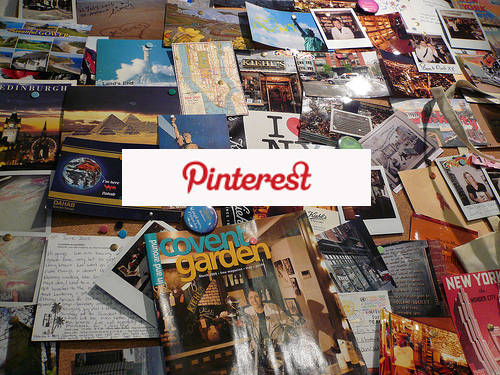 Online pinboard, Pinterest has been reported in the tech and mainstream press as the coolest new social network on the block with amazing growth and an avid bunch of mostly female fans. In early April Expirian Hitwise flagged Pinterest as the number 3 social media website with 104 million visitors in March, and Shareaholic reported that Pinterest referred more traffic than Google+, LinkedIn, and YouTube combined. In Australia Pinterest is ranked one of the top 10 social media websites.
Online pinboard, Pinterest has been reported in the tech and mainstream press as the coolest new social network on the block with amazing growth and an avid bunch of mostly female fans. In early April Expirian Hitwise flagged Pinterest as the number 3 social media website with 104 million visitors in March, and Shareaholic reported that Pinterest referred more traffic than Google+, LinkedIn, and YouTube combined. In Australia Pinterest is ranked one of the top 10 social media websites.
These are some seriously impressive numbers and clearly marketers need to take notice. But before your head starts spinning about how you are going to fit yet another social network to fit into your crowded marketing plan, I have some tips about different ways you can use Pinterest to manage your marketing other than the pretty standard infographic marketing.
Firstly, what is Pinterest?
At its core, Pinterest is simple a fancy picture bookmarking service with a beautiful website, rich tagging, sharing, and commenting. Oh, and it also has a massive audience. The picture sharing makes the service very retail friendly and the homepage is dominated by fashion and lifestyle pictures pinned by pinterest users with comments like “want”, “Awww cute”, and “I love this!”. Pinterest reminds me of a nice long lunch for ladies and the odd bloke where the conversation is free flowing and covers a whole range of issues close to the hearts of the ladies. That people pin images and not pithy 140 character aphorisms makes it a lot more emotionally engaging than Twitter or Facebook which depends a lot more on the social connections between users.
Pin your products
For retailers, this is a really easy one. Your online store should already have attractive shots of your products which customers can view in multiple ways. Nike and Reebok have great examples of product shots done the right way, with multiple views and zooming. Adding a pin button to your product page gives customers the opportunity to bookmark the stuff that they like and share it with their network. If others in their network love it they will comment or like it and you will have created a buzz. All with one button. And the great thing is that, as customers are pinning your product images, you get to control more control over your brand message than you might with Facebook and Twitter.
I also recommend pinning your own products to create theme pages which may be accessed by an audience far larger than your website. For example you might create seasonal themes, gifts, weddings, or weird themes to have a bit of fun. Make sure that users can find the original image on your website so they can link back to your website.
Make sure your product pins lead directly to a product page so your engaged buyers can purchase.
Pin your special offers
I think this is a great way of featuring all your bargains and specials in one place. Pinterest is so effective at driving traffic that Mashable reports that a spammer is reportedly making $30k per month by pinning Amazon affiliate links. Pinterest also have been reported to modify some users links to add in their own affiliate codes so they can claim the revenue. If it works for an Pinterest and affiliate spammers, it can work for you (minus the nasty spammy stuff). As with your products make sure that users can find the original images on your website so they can link back to your website.
Pin testimonials and case studies
What better way of telling the story about your brand than creating a pinboard of all your success stories and case studies. Pin a nice picture of your customer with your branding and you have an instant way of telling a wide audience how awesome you are. This technique can be used by any business including B2B to promote niche services and is a great way of appealing to the humanistic buyer types. Make sure your case studies and testimonials have just enough information to encourage click-throughs to your website. Some marketers recommend adding multiple images to tell a story to really engage Pinterest users.
Pin your blog posts
Pinterest’s magazine type layout lends itself very well to presenting blog posts in a way that’s easy for readers to scan. Australian news blog, crikey.com.au does this very effectively on their Pinterest board. Copyblogger, as content marketing experts have also nailed using Pinterest to promote their services. The secret to success is grouping your posts in compelling categories with catchy headlines. You should also add a pin button to all your blog posts so your readers can pin the stuff they like.
Like any marketing tool, Pinterest will be useful only if you convert the traffic to complete your conversion goal – purchase, subscribe, or submit an enquiry. Make sure you measure the impact Pinterest is having on your website performance. Take notice of how visitors behave compared with other visitors and make changes where required.
There are already a bunch of tools to help manage and report on your Pinterest marketing like Pinerly, and Pinreach.
How are you going to use Pinterest?

